How did my garden plants come through the big ice storm? Come into my post and find out! There's quite a variety to see!
Here's the first post on the Great Willamette Valley Ice Storm of 2016. I've already shown the effect of the ice on my Sequoia and Larch Trees; Blue Spruce and Western Redcedar Trees; Noble Fir, Grand Fir, and Eastern White Pine Trees; two sets of Douglas-Firs, Ponderosa Pines, and Hazel, Walnut, Birch, Holly, and Elm Trees. I'll be posting two more ice storm photosets, with fruit trees and homestead miscellany. And then we'll have an ice storm party!
Portuguese Kale
My Portuguese Kale took the ice like a champ! The leaves are huge, with a center stem that is tender and mild. The leaves are more like a collard, and they are hydrophobic. So the rain didn't stick to the leaves and the ice froze in chunks rather than encasing each leaf.
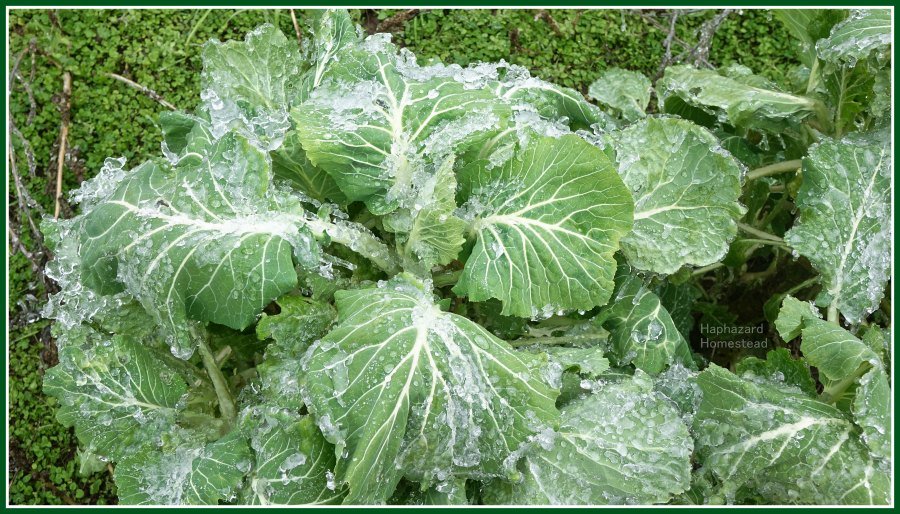
Another name for this plant is Tronchuda Beira. Maybe some of you from Portugal know how to use it for making Caldo Verde! Portuguese Kale is incredibly robust and productive. These plants are two years old. I planted them in the spring of 2015, harvested a lot all year long. Then they went to seed in the summer of 2016, but put on more robust growth for fall and winter harvests. I'll have a separate post about this great plant sometime soon.
Spearmint
Most years, spearmint doesn't make it through the winter. It gets frozen back. But when the ice storm hit, the spearmint was still around. The ice was thick on the little plants! And by the time the ice had stuck around for four days, the leaves had started to yellow. But once the ice left, the spearmint was fine -- except now it was vulnerable to our cold weather - and most of the leaves have pretty much died back.
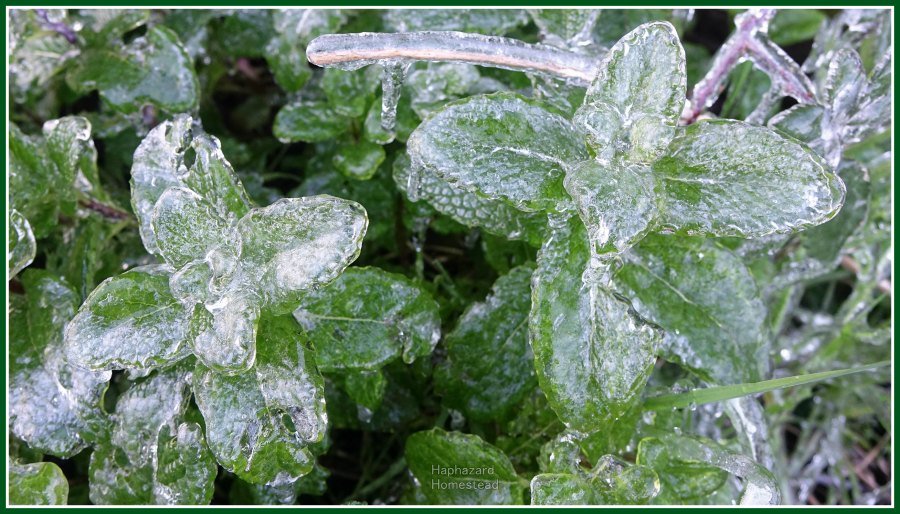
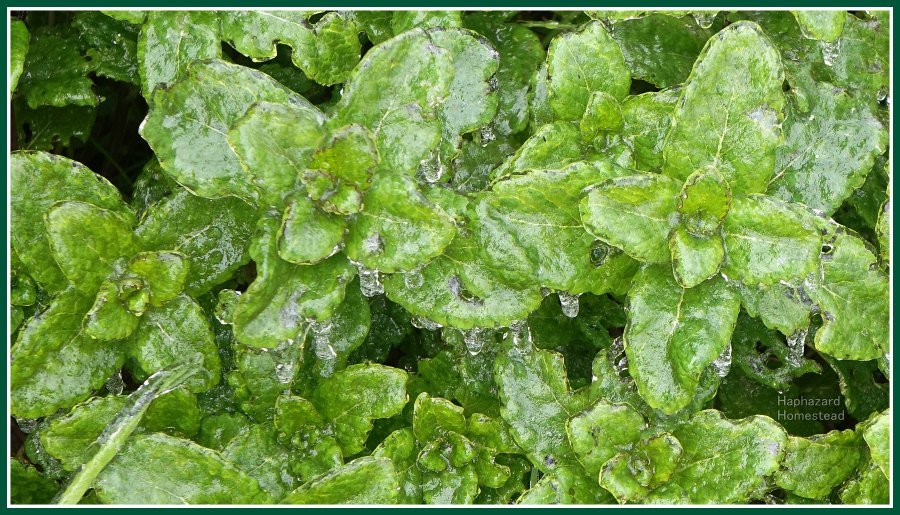
Weeds - Dandelion, Chickweed, Field Mustard
Dandelions are such enthusiastic plants! They will grow and bloom anytime there is enough soil moisture and a couple days of temperatures above freezing. This dandelion flower was fully open and couldn't get shut against the weather before freezing.
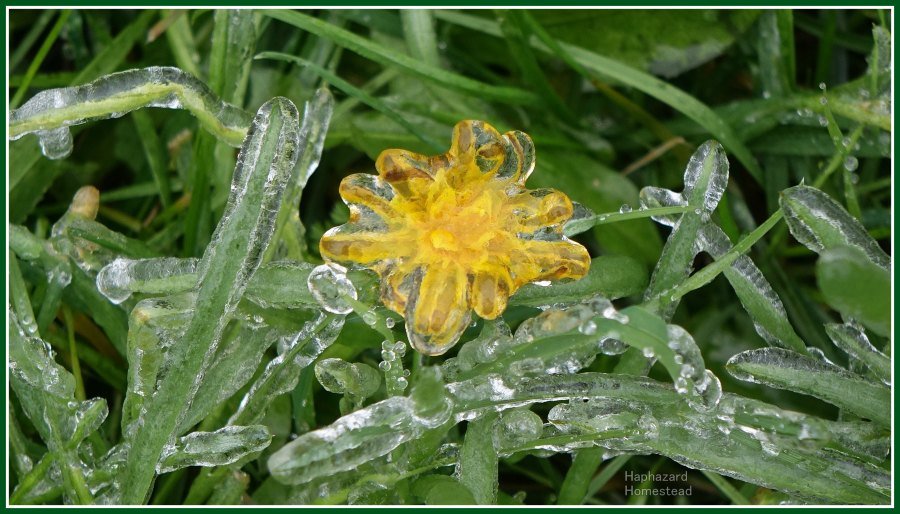
You can see why I eat a lot of Chickweed (Stellaria media) and Wild Field Mustard (Brassica rapa) in the winter. These plants are robust! They both were coated with ice, but emerged unbothered - even though Chickweed has weak stems that cause it to sprawl all over, and the plant is so tender it's easy to pull by the handful for salad greens.
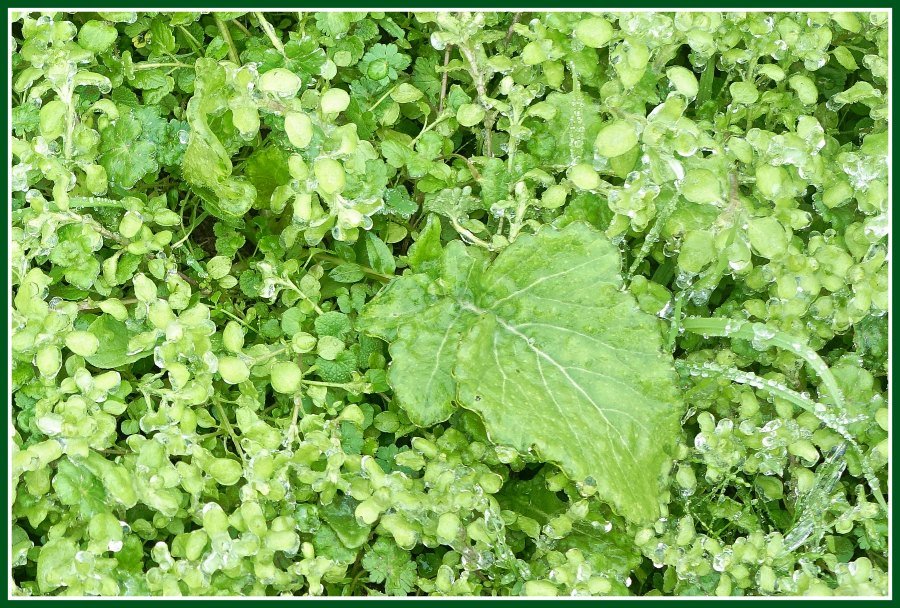
Asparagus
I didn't have my asparagus patch cleaned up before the ice storm hit. So the delicate, dry, dead fronds of asparagus were super-loaded with ice. Amazingly, the fronds didn't fall over with all that weight. Instead, the ice froze everything solidly in place. Once it melted though, so did the asparagus fronds! That made it a lot easier to clean up my asparagus patch, though!
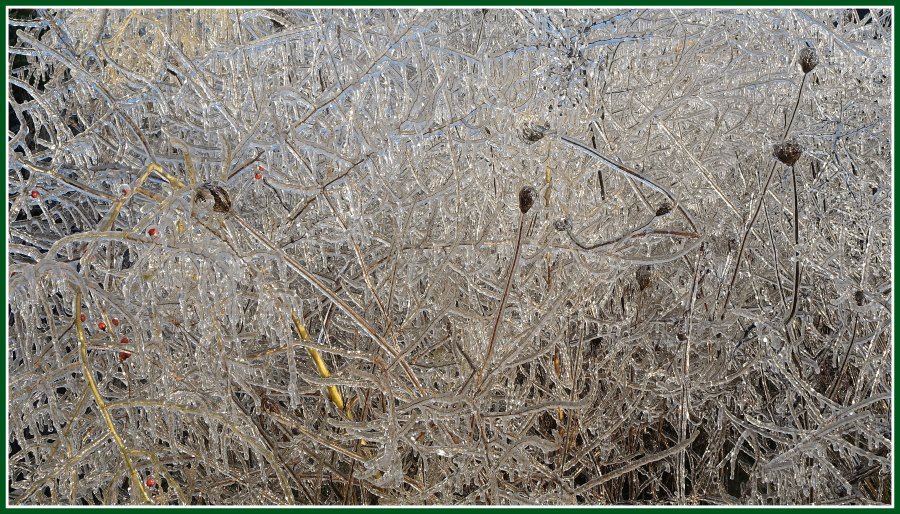
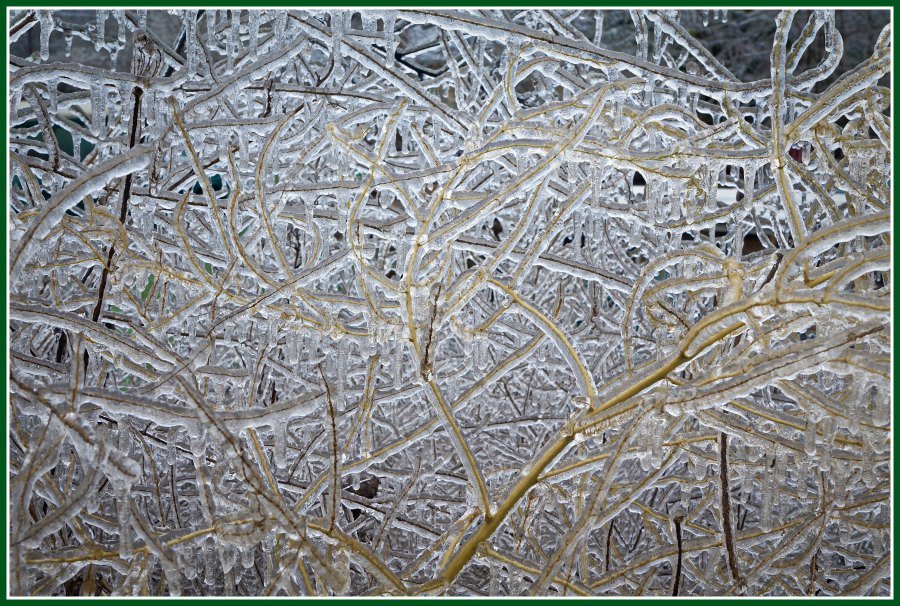
I really liked how the little asparagus berries wee so bright against the dead asparagus fronds and the ice. They were like little Christmas ornaments.
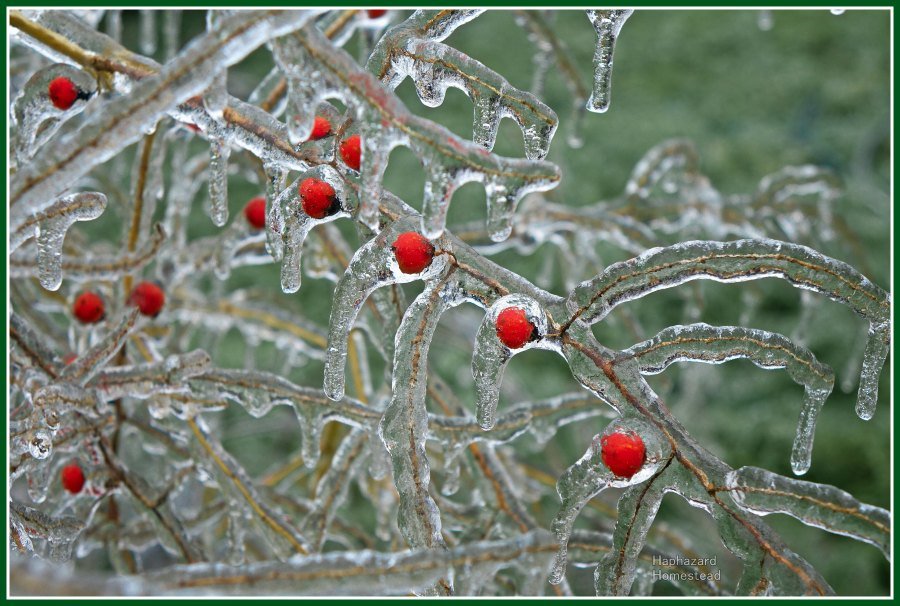
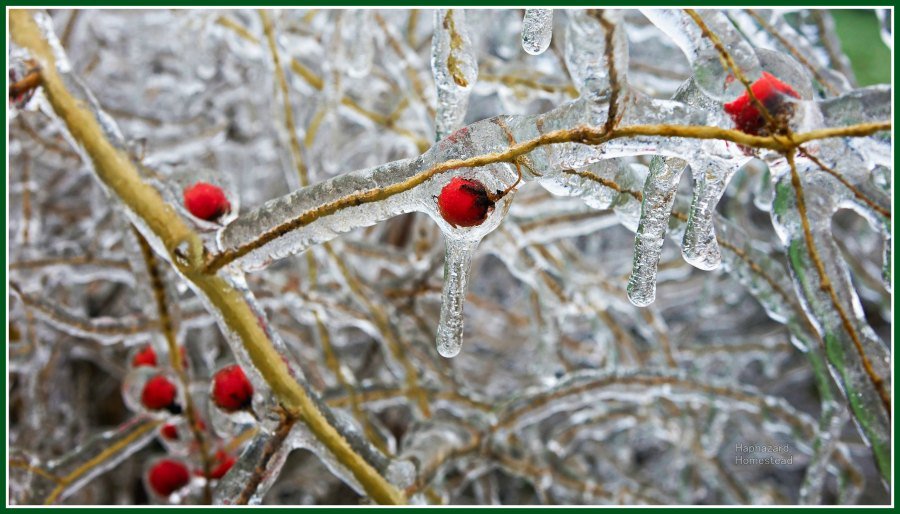
Rosehips
Early winter was so warm here that my rosehips hadn't yet colored up to a bright red, or sweetened up for making tea or snacks. This ice did the trick, though! These large fruits are from an incredibly vigorous climbing rose, White Dawn. It's white petals are great to eat, too! I'll show you sometime.
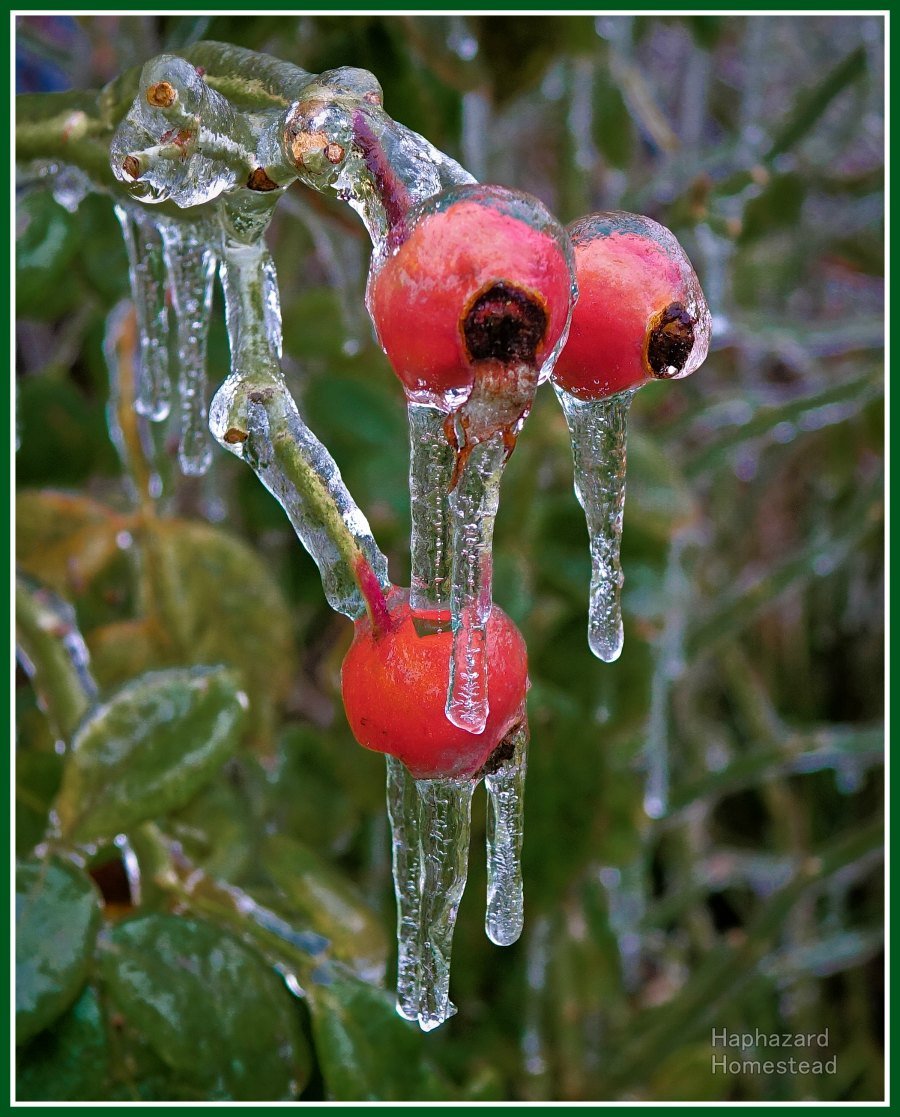
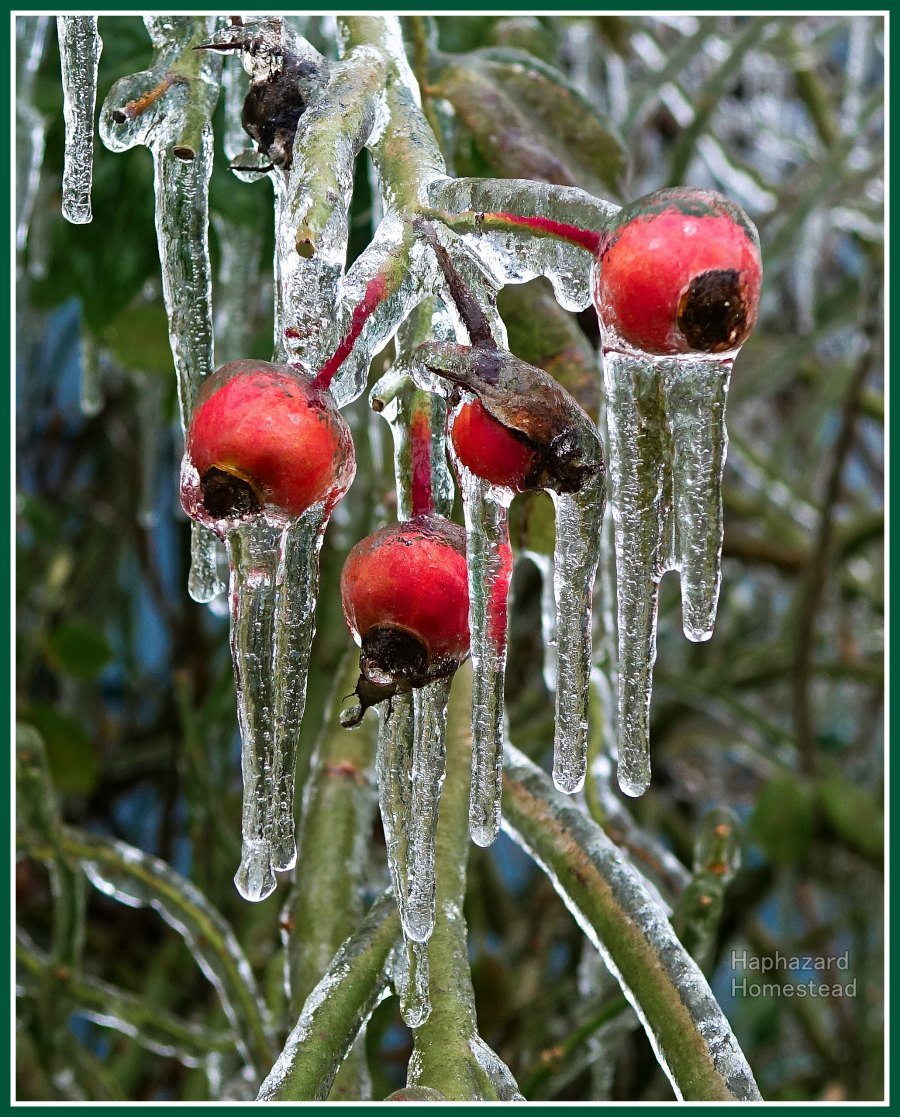
Yucca
Who would guess that I would be showing how a growing flower stalk of a Yucca plant was affected by ice in December! This is so backwards -- they are supposed to bloom in the summer. But we had a very dry year in 2016 - at least until the fall rains started. This plant didn't even try to flower in our drought, but tried to flower and set seed in the fall -- a race against inevitable defeat, I think. The flowers were just beginning to open up. I would have been able to eat them, then! Oh, well, maybe in 2017. But the yucca is all off-schedule now, so who knows?
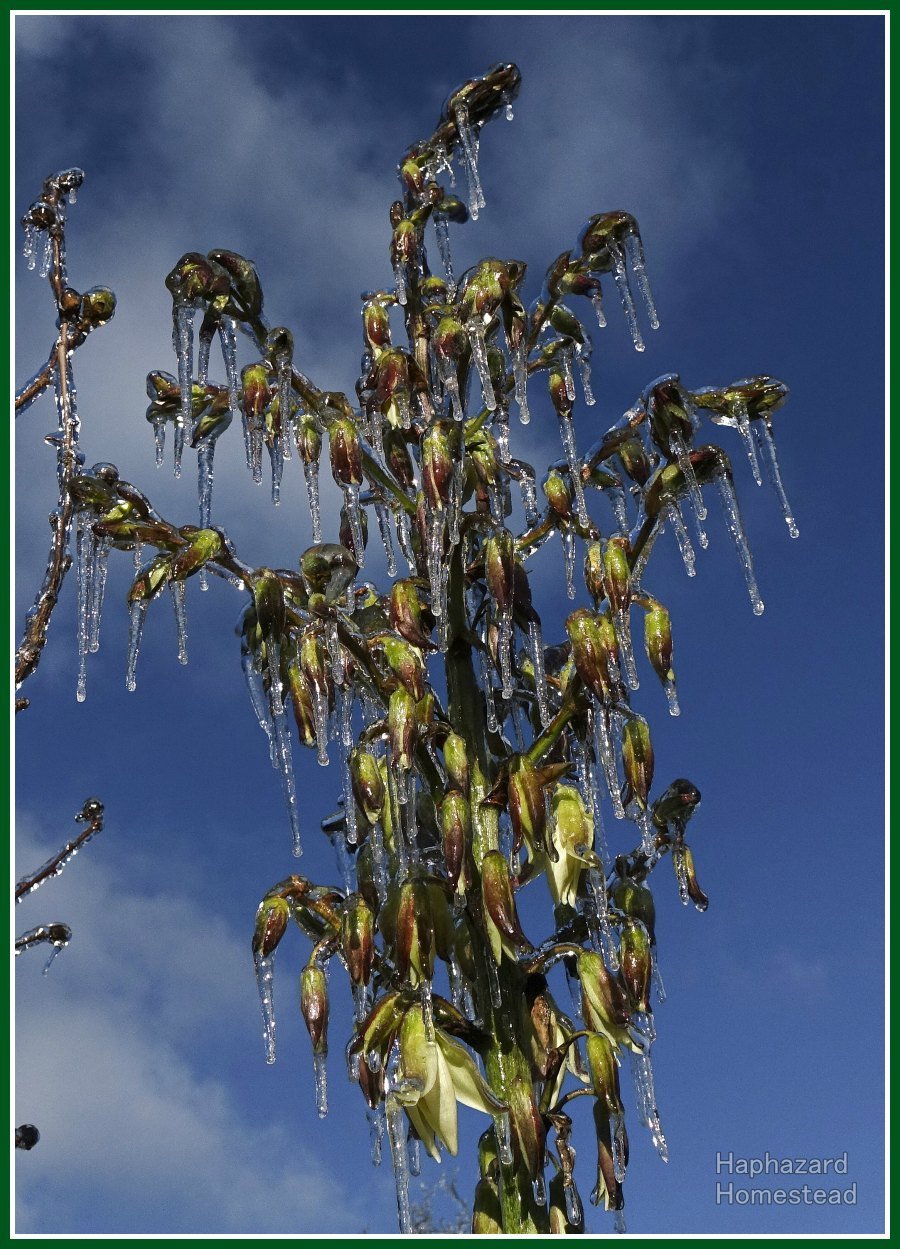
What About You?
Do you have any garden plants that are usable through the winter? Is winter close to being over where you are? Do you ever have ice storms in the spring? I would like to know!
Other posts in this Ice Storm Series:
- The Great Willamette Valley Ice Storm of 2016
- Sequoia and Larch Trees
- Blue Spruce and Western Redcedar Trees
- Noble Fir, Grand Fir, and Eastern White Pine Trees
- Douglas-Firs 1
- Douglas Firs 2
- Ponderosa Pines
- Hazel, Walnut, Birch, Holly, and Elm Trees
I hope you are enjoying these ice storm photosets. There's only two more left - fruit trees, garden plants, and homestead miscellany. Don't miss them! Because then we have an ice storm party! :D

